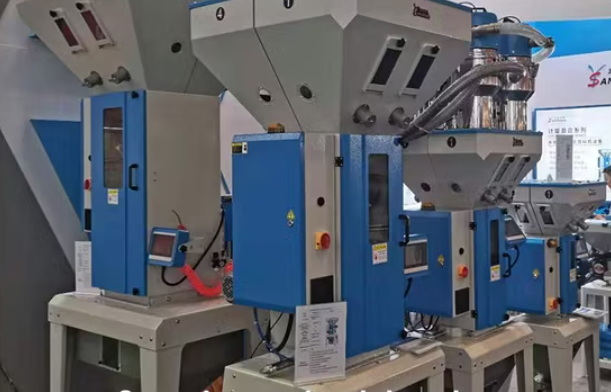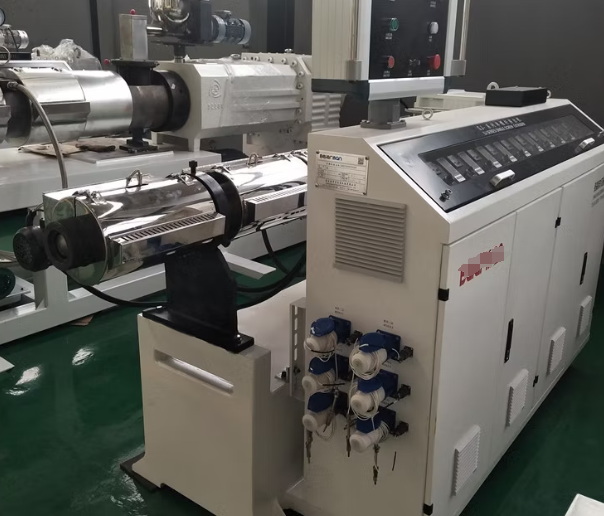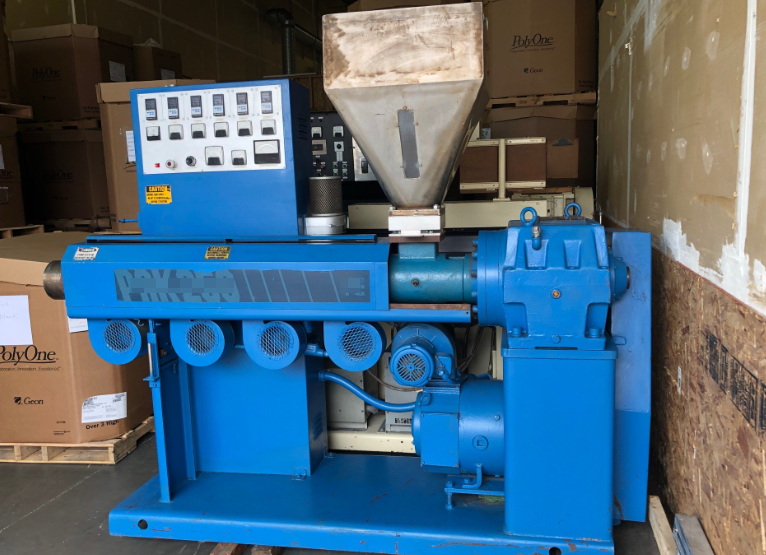Content Menu
● Introduction to Extrusion Machinery Cutting Blades
>> Types of Blades
● Materials Processed by Extrusion Machinery Cutting Blades
>> Plastics and Rubber
>> Aluminum
>> Other Materials
● Applications of Extrusion Machinery Cutting Blades
● Challenges and Solutions
● Advanced Technologies in Extrusion Machinery Cutting Blades
● Maintenance and Optimization
● Environmental Considerations
● Future Developments
● Conclusion
● FAQ
>> 1. What types of blades are used in extrusion machinery?
>> 2. How do I choose the right blade material for extrusion cutting?
>> 3. Can extrusion machinery cutting blades be used for cutting aluminum?
>> 4. What are common challenges when using extrusion machinery cutting blades?
>> 5. How can I improve the lifespan of extrusion machinery cutting blades?
Extrusion machinery cutting blades are versatile tools used across various industries to process a wide range of materials, from plastics and rubber to metals like aluminum. These blades are integral to the extrusion process, allowing for precise cutting of extruded profiles and tubes. In this article, we will explore the different materials that can be processed using extrusion machinery cutting blades, discuss the types of blades available, and provide insights into their applications.

Introduction to Extrusion Machinery Cutting Blades
Extrusion machinery cutting blades are designed to work with different types of extrusion machinery, including fly-knife cutters and saw-type cutters. Fly-knife cutters use one or more blades mounted on a flywheel, providing cutting inertia for fast and effective cutting of softer materials like flexible PVC or rubber profiles. Saw-type cutters, on the other hand, utilize a circular saw blade to remove a small strip of material, making them suitable for rigid extrusions.
Types of Blades
1. Straight Edged Blades: These blades are ideal for cutting soft and rigid plastic profiles, as well as formed and lined rubber products. They are compatible with all major fly-knife extrusion cutting machinery brands.
2. Curved Blades: Curved blades facilitate a pronounced slice, producing clean cuts by varying the force applied to the material. They are beneficial for cutting thin-walled tubing.
3. Pierce Blades: These blades combine vertical chopping and slicing motions, focusing cutting force onto a small section of the tube before spreading across its width. They are effective for softer materials.
4. Radius Edged Blades: These are perfect aftermarket additions to extrusion fly-knife cutting operations, suitable for both soft and rigid plastic profiles.
5. Parison Cut-off Blades: Known as stab knives, jab knives, or trim knives, these blades are integral to the blow molding process, used to cut parisons before forming.
Materials Processed by Extrusion Machinery Cutting Blades
Plastics and Rubber
Extrusion machinery cutting blades are extensively used in the plastic and rubber industries. They can cut a variety of extruded profiles and tubes made from these materials, including flexible PVC, rigid plastics, and rubber products. The choice of blade material, such as stainless steel or spring steel, depends on the specific requirements of the material being cut. Stainless steel is better for abrasive materials due to its superior edge holding, while spring steel offers greater shock tolerance.
Aluminum
While extrusion machinery cutting blades are not typically used for cutting aluminum, aluminum extrusions are often cut using specialized saws like miter saws or chop saws with carbide-tipped blades. These blades are designed to handle the soft nature of aluminum, preventing clogging and ensuring clean cuts.
Other Materials
In addition to plastics, rubber, and metals, extrusion machinery cutting blades can also be used for cutting other materials such as non-woven fabrics, though specialized blades are required for these applications.

Applications of Extrusion Machinery Cutting Blades
Extrusion machinery cutting blades are used in various industries, including:
- Automotive: For cutting profiles used in vehicle components, such as dashboard trim and door seals.
- Medical: For precision cutting of medical device components, like tubing for medical equipment.
- Construction: For cutting profiles used in building materials, such as window frames and door handles.
- Consumer Products: For manufacturing consumer goods like plastic containers and packaging materials.
Challenges and Solutions
When using extrusion machinery cutting blades, several challenges may arise:
- Blade Wear: Regular sharpening and replacement are crucial to maintain cut quality. Dull blades can lead to increased energy consumption and reduced product quality.
- Material Fines: Heating the blade between cuts can help reduce fines when cutting softer materials. This technique prevents the material from tearing and produces cleaner cuts.
- Noise Reduction: Using sound-absorbing materials or enclosures around the cutting area can reduce noise levels, improving workplace safety and comfort.
Advanced Technologies in Extrusion Machinery Cutting Blades
Recent advancements in blade technology include the use of advanced materials and coatings that enhance durability and performance. For example, applying a titanium nitride (TiN) coating to blades can improve their wear resistance, extending their lifespan and reducing maintenance costs.
Maintenance and Optimization
To optimize the performance of extrusion machinery cutting blades, regular maintenance is essential. This includes:
- Blade Inspection: Regularly inspect blades for signs of wear or damage.
- Sharpening: Sharpen blades regularly to maintain their cutting efficiency.
- Cleaning: Keep the cutting area clean to prevent debris from affecting blade performance.
Environmental Considerations
In recent years, there has been an increasing focus on sustainability in manufacturing processes. Extrusion machinery cutting blades can contribute to this by reducing waste and improving efficiency. For instance, using blades that minimize material waste during cutting can help reduce the environmental impact of production processes.
Future Developments
As technology continues to evolve, we can expect further innovations in extrusion machinery cutting blades. These might include more advanced materials, automated sharpening systems, and improved safety features. Such developments will enhance the efficiency and precision of cutting processes, benefiting industries reliant on extrusion technology.
Conclusion
Extrusion machinery cutting blades are essential tools for processing a wide range of materials in various industries. By understanding the types of blades available and their applications, manufacturers can optimize their cutting processes to achieve high-quality cuts efficiently.

FAQ
1. What types of blades are used in extrusion machinery?
- Extrusion machinery uses various types of blades, including straight edged, curved, pierce, radius edged, and parison cut-off blades, each suited for different materials and applications.
2. How do I choose the right blade material for extrusion cutting?
- The choice between stainless steel and spring steel depends on the material being cut. Stainless steel is better for abrasive materials due to its superior edge holding, while spring steel offers greater shock tolerance.
3. Can extrusion machinery cutting blades be used for cutting aluminum?
- Typically, specialized saws with carbide-tipped blades are used for cutting aluminum extrusions, not standard extrusion machinery cutting blades.
4. What are common challenges when using extrusion machinery cutting blades?
- Common challenges include blade wear, material fines, and the need for regular sharpening and replacement to maintain cut quality.
5. How can I improve the lifespan of extrusion machinery cutting blades?
- Proper blade selection, regular sharpening, and occasional replacement based on material hardness and cut frequency can improve blade lifespan.













